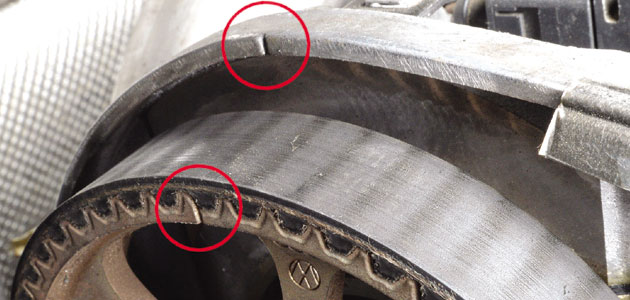
Belt fitting guide for 1.8L T model with engine code ARZ; Fitment tips and advice.
Significant errors are often committed when changing the timing belt on this vehicle, so it’s important that you adhere to the advice provided in this article. The manufacturer recommends changing the timing belt and the tensioning pulley at 180,000 km or after five years. As the multiV belt has the same change interval as the timing belt, this should also be changed at the same time in order to avoid later failures with unnecessary costs.
Recommended Fitting Time: 2.2 hours
Special Tools Required: OE Locking Tool (T40011), OE Tensioning Bolt (T10092), OE Engine Support Bridge(10-222A)
Preparatory Work
Identify the vehicle using the engine code and then disconnect the vehicle battery. Do not turn the crankshaft and camshaft once the timing belt has been removed. Turn the engine in the normal direction of rotation (clockwise) unless otherwise specified, and only turn the engine at the crankshaft pulley (and not at other sprockets). Make sure you comply with all of the VM’s recommended tightening torques.
Raise the vehicle and support the engine, or fit the engine support bridge so that the front engine mount is not under strain. Then remove the engine cover, power steering reservoir (don’t detach the hoses), ancillary unit belt and belt tensioner, coolant expansion reservoir (the hoses don’t need to be
detached), and the upper, middle and lower timing belt guards. Disconnect the fuel lines, before removing the plug from the Hall-effect sensor. Now remove the hose between the charge-air line and charge-air cooler, engine compartment underpanel, crankshaft belt pulley and front engine mount, remembering to support the engine when you do so or using the engine support bridge to lift the engine.
Removal – camshaft belt
Set the valve timings to the TDC mark of cylinder 1, remembering that the mark (notch) on the camshaft pulley must align with the mark (notch) on the rear timing belt guard (see Fig 1).
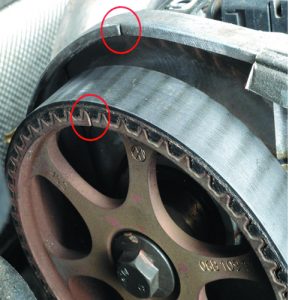
Now check the crankshaft mark. To do so, you should remove the rubber plug from the torque converter housing (see Figs 2, 3 & 4).
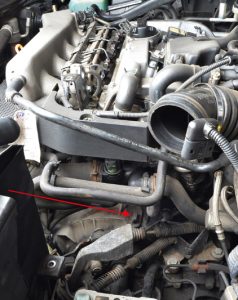
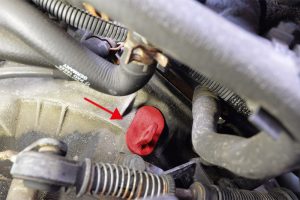
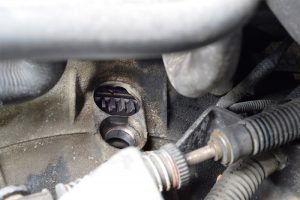
The mark (notch) on the flywheel must align with the mark (projection) of opening (see Fig 5).
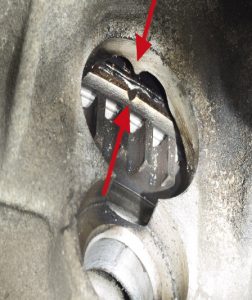
Screw the OE tensioning bolt (T10092) into the hydraulic damper and slowly release the tension on the timing belt/tensioning pulley by turning the OE tensioning bolt (T10092) (see Figs 6, 7, 8 & 9),
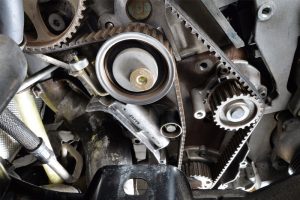
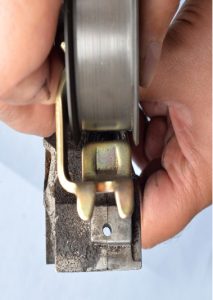
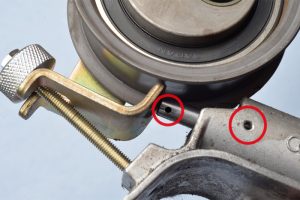
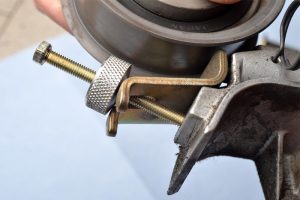
until the OE. locking tool (T40011) can be inserted into the small bore of the hydraulic damper. The
timing belt can now be removed (see Fig 10).
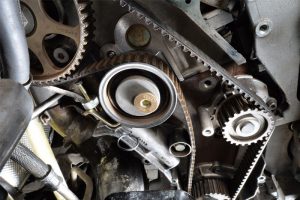
Installation – camshaft belt
Screw the OE tensioning bolt (T10092) into the new hydraulic damper (see Fig 11).
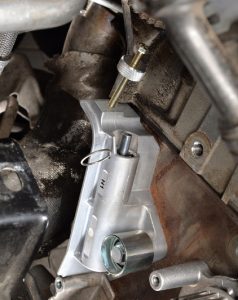
Now fit the new tensioning pulley (27Nm) and new hydraulic damper (15Nm) and tighten the OE tensioning bolt (T10092) so that the locking tool will be easy to remove later from the new hydraulic damper (see Fig 12).
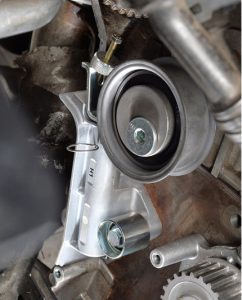
You should never withdraw the locking pin until the timing belt and tensioning pulley are correctly installed. The hydraulic damper can only be actuated with the tensioning bolt and pressing together – with a vice or some pliers, for example – could damage the hydraulic damper. Fit the timing belt on the crankshaft pulley, starting clockwise, taking care to ensure that the timing belt is not kinked during fitting. The timing belt must be tight between the sprockets on the tight side.
Tension the timing belt by withdrawing the locking pin of the hydraulic damper and removing the OE tensioning bolt (T10092) – the tension is set by the hydraulic damper. There are no other marks on the tensioning pulley, so now you should turn the engine through two revolutions in the direction of engine travel. Set the engine to TDC of cylinder 1 before checking and, if necessary, correcting the timings.
Now refit the crankshaft belt pulley. To do so, hold the crankshaft central bolt using the box-end wrench or counterhold, then tighten to the appropriate torque (strength category M8 8.8, 10Nm +90°, M8 10.9, 40Nm). Fit the components in the reverse order of removal. First install the upper and lower timing belt guard (10Nm) using threadlocker, and then the ancillary unit belt and belt tensioner (23Nm) are next.
Now fit the engine mount bolts and engine mount, as well as the hose between the charge-air pipe and charge-air cooler, power steering reservoir and coolant expansion reservoir. Then reconnect the fuel lines and plug the Halleffect sensor back in. Refit the engine cover and engine compartment underpanel. Record the replacement of the original ContiTech timing belt on the sticker supplied (see Fig 13) and then stick this in the engine compartment.

Finally, carry out a test run or test drive.









